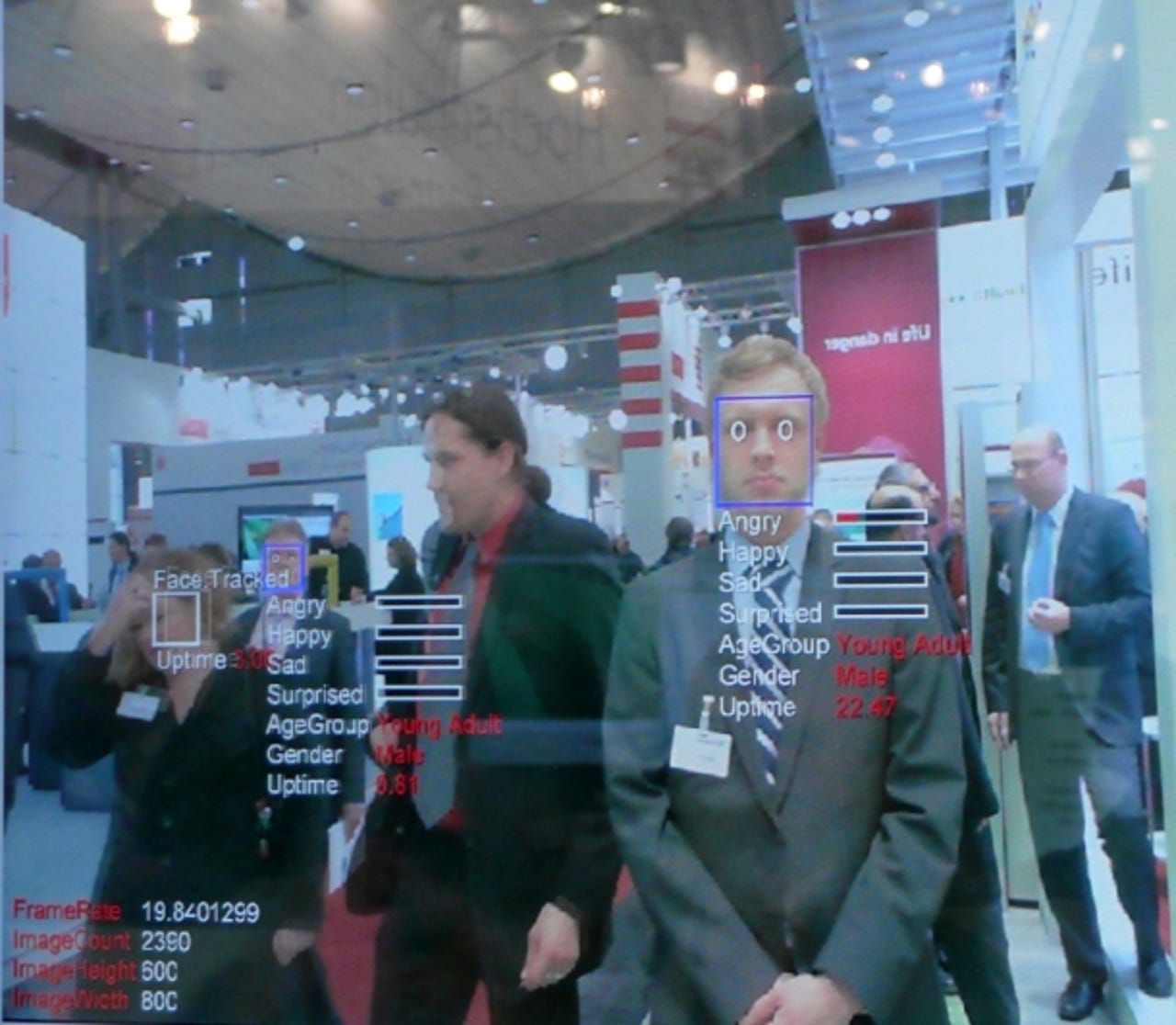Facial recognition, gesture tech leads the way


Facial recognition software
As sensors and cameras become smaller, new ways are being dreamt up for humans to interact with computers. ZDNet UK's sister site silicon.com rounds up everything from facial recognition to eye-tracking technologies on show at CeBIT 2011 in Germany.
Detecting changes in a person's mood when carrying out market research can be tricky and imprecise.
The Shore facial-detection system, from the Fraunhofer research organisation, is designed to identify and catalogue people's changing emotions using facial-recognition software.
The system works by looking for people's faces in a video and then suggesting their age, gender and facial expression. It is able to count the number of different people in shot, detect the expressions of multiple people in the same frame, and assess the expressions of people not directly facing the camera.
In the CeBIT demo, Shore categorised expressions as angry, happy, sad or surprised — with the system reportedly able to detect changes in facial expression between individual frames of video.
The institute suggests the system would be suited to judging audience reaction to signs, videos and products.
Gesture recognition software
Soon shopaholics may be able to browse the shelves of their favourite store just by looking through the front window.
The interactive shop window, produced by the Fraunhofer research organisation, is an interactive computer system that allows shoppers to discover more about products displayed in the shop window using gesture recognition.
Shoppers can point at products to view more detailed 3D models of the items on a screen and use gestures to explore the models and call up product information such as availability and price.
The position of the hands, face and eyes of the shopper are recorded by four cameras, and fed into the system's gesture-recognition software.
Digital map table
This digital map table system, produced by the Fraunhofer Institute, is designed to help officials plan major state or sporting events, or manage large policing or military operations.
The table displays a map, which in the CeBIT demo could be navigated by manipulating the touchscreen tabletop.
Users are able to explore specific areas of the map in more detail by placing a Fovea-Tablett — a customised tablet PC developed by the Fraunhofer research organisation — on top of the table.
The tablet can display a detailed, high-resolution image of the area under the tablet or highlight items of interest within the area. The tablet can also store the area of map underneath it, so it can be viewed away from the map table. Users can also set up the tablet to highlight various details.
People can also annotate the area of map displayed on the tablet and see those changes displayed on the digital map table.
For more on this ZDNet UK-selected story, see Photos: Gesture controls, eye-tracking tech and facial recognition on silicon.com.
Get the latest technology news and analysis, blogs and reviews delivered directly to your inbox with ZDNet UK's newsletters.